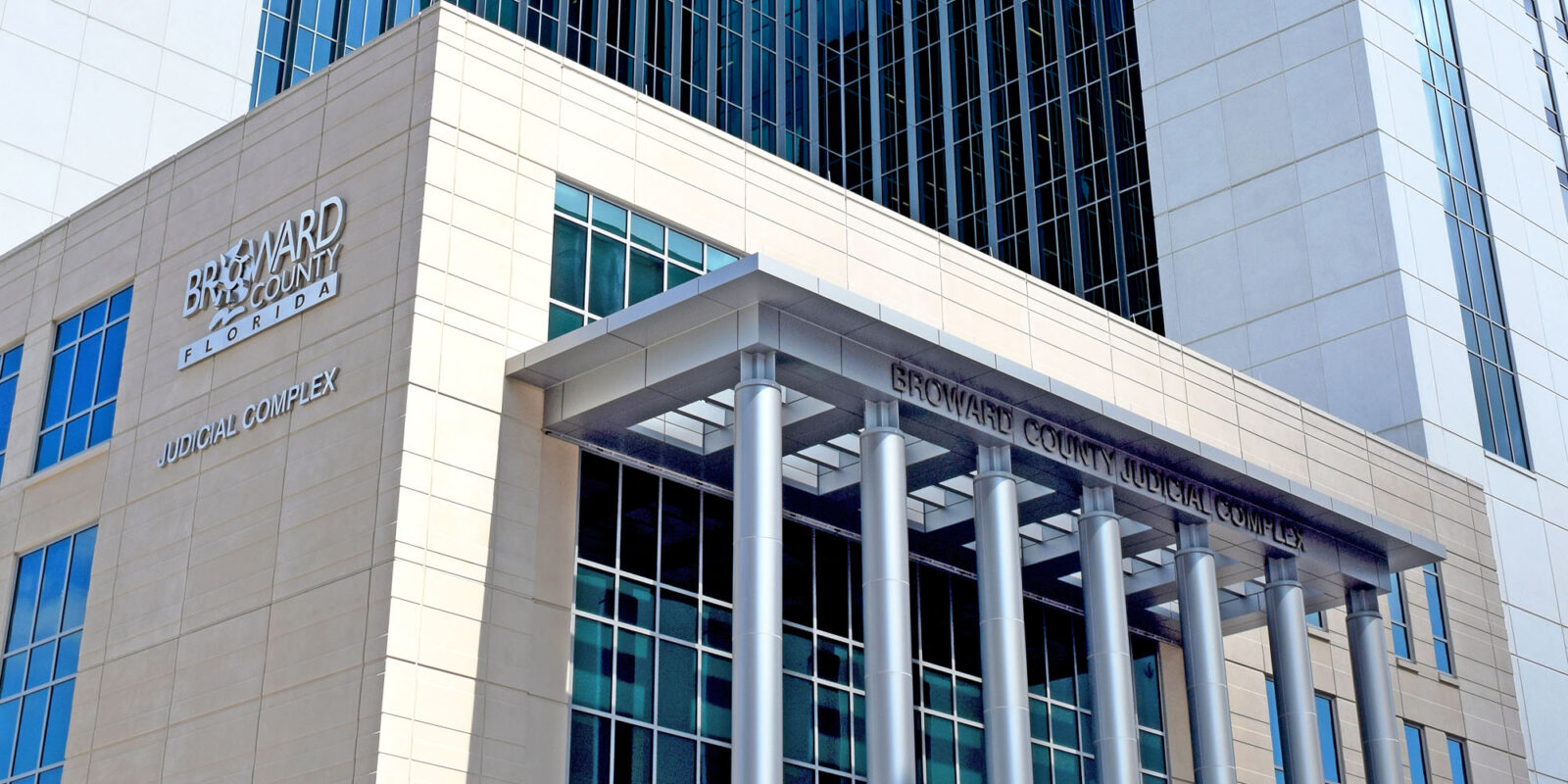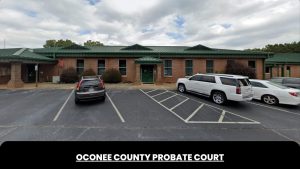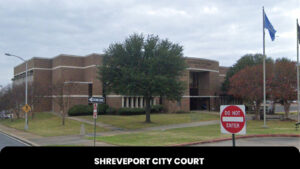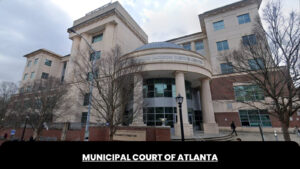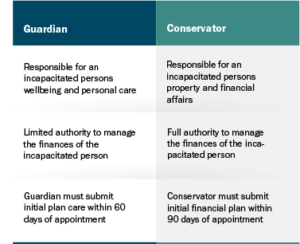The Broward County Courthouse in Fort Lauderdale, Florida has served as the central site of the county’s judicial system for over a century. As one of the most recognizable landmarks in Broward County, the courthouse has been the location of many high-profile trials and events throughout its history. The purpose of this article is to provide an overview of the Broward County Courthouse, including its history, architecture, notable cases, daily operations, and future plans.
History of the Broward County Courthouse
Original courthouse built in 1915
The first Broward County Courthouse was constructed in 1915 at a cost of $39,000. At the time, Fort Lauderdale’s population was less than 5,000 residents. This original courthouse was a two-story brick building located in downtown Fort Lauderdale. It served the county’s legal needs for over 50 years. However, by the late 1960s, Broward County had undergone massive population growth, and it became clear that a larger, more modern courthouse facility would be needed.
New courthouse constructed in the 1970s
To meet the needs of the expanding county, construction began on the current Broward County Courthouse in the early 1970s. The new $15 million complex opened in 1976. The courthouse was strategically built next to the Broward County Jail, which opened the same year. Designed by architect William Morgan, the new courthouse could hold 20 courts along with expanded office space. In the following decades, two additional wings were added to accommodate more courtrooms and county offices.
Broward County Clerk of Courts
The Broward County Clerk of Courts serves a critical role in the operations of the county judicial system. As an elected constitutional officer, the Clerk is responsible for maintaining court records, collecting and disbursing court fines and fees, issuing juror summonses, and providing services to the public. With over 80 locations across Broward County, the Clerk’s office impacts thousands of residents each day.
Overview of the Broward County Clerk of Courts
The Broward County Clerk of Courts office is currently headed by Clerk Brenda D. Forman, who was elected in 2016. The Clerk’s office employs over 1,600 people across Broward County. In addition to the main courthouse in downtown Fort Lauderdale, the Clerk operates branch offices in municipalities like Deerfield Beach, Hollywood, and Pompano Beach. These satellite locations allow residents to access services closer to home.
Responsibilities of the Clerk’s Office
Maintaining Court Records
One of the main jobs of the Clerk’s office is to maintain official records for the County and Circuit courts. This includes keeping records for criminal, civil, family, and probate cases. The Clerk is responsible for maintaining both physical files and electronic records in the Court’s database. This job requires organizing mountains of paperwork and keeping information secure yet accessible to authorized parties.
Receipting Court Fines and Fees
The Clerk of Courts collects money paid for court costs, fees, fines and filing charges. Staff must accurately track payments made in-person, online, by mail or by other methods. The office then disburses funds to appropriate departments, agencies and victims owed restitution. In 2020, the Broward Clerk’s office collected over $73 million in revenues from court fees and fines.
Issuing Juror Summonses
To fulfill the right to a trial by jury, the Clerk of Courts utilizes state databases to randomly select registered voters and issue summonses for jury duty. The office coordinates the jury selection process and works to make jurors’ service pleasant and efficient. In 2020, over 175,000 Broward citizens reported for jury duty.
Services Provided by the Clerk’s Office
Court Records
The Clerk provides certified copies of court documents to parties involved in a case or to members of the public, for a per-page fee. Individuals can also inspect public records in person at courthouse locations.
Online Services
Through the Clerk’s website, users can pay traffic tickets and court fees, request copies of documents, search court calendars, view daily dockets of case activity, and more. The portal provides convenient access 24/7.
Passports
As an authorized passport acceptance facility, the Broward Clerk’s office processes new passport applications as well as renewals for U.S. citizens. Applicants can get passport photos taken at many branch locations.
History and Background
Formation of Broward County
Broward County was established in 1915 out of portions of Dade and Palm Beach counties. Fort Lauderdale was named the county seat. As county population grew over the 20th century, the court system expanded to meet the needs of residents and businesses.
Notable Clerks
Robert Lockwood served as the first Clerk of Courts beginning in 1915. He was succeeded by John C. Geiger, who served for over 50 years until 1976. More recent longtime Clerks include Robert E. Lockwood (1976-1997), Howard C. Forman (1997-2016) and current Clerk Brenda D. Forman (2016-present).
Contact Information and Locations
Main Courthouse
The main courthouse is located at:
201 SE 6th Street
Fort Lauderdale, FL 33301
This location houses the County Civil and Probate courts along with the Clerk’s administrative offices.
Branch Locations
The Clerk also operates branch courthouses and service centers across Broward County. Addresses for each can be found on the Clerk’s website. At branch offices, citizens can pay fines, request records, file court documents, and more.
Architecture and design of the courthouse
Exterior design and features
The Broward County Courthouse has a distinct Brutalist architectural style, marked by its imposing concrete facade, angular geometry, and functional design. The courthouse’s exterior features protruding balconies and a tall central clock tower. At 20 stories high, the courthouse tower looms over the Fort Lauderdale skyline and can be seen throughout the city. The building’s heavy monolithic appearance projects an image of authority and solemnity befitting its governmental purpose.
Interior design and layout
Inside, the courthouse follows an efficient, pragmatic design philosophy in line with Brutalist style. The boxy layout separates functions like courtrooms and offices using concrete walls and raised platforms. Floors are connected by elevators and exposed concrete staircases. Small windows and overhead lighting create a cold, cavernous atmosphere inside. The core of the courthouse consists of courtrooms and hearing rooms where some of Broward County’s most impactful legal proceedings have occurred over the decades.
Notable trials and cases held at the courthouse
Trial of serial killer Ted Bundy
One of the most infamous trials in the courthouse’s history was the serial murder trial of Ted Bundy in 1979. Bundy was charged with the Chi Omega sorority murders and assault of other Florida State University students. The gruesome murders, Bundy’s escapes from custody, and his theatrics during the nationally televised trial all contributed to the courtroom spectacle, which ended in Bundy’s conviction and death penalty sentence.
Elian Gonzalez custody case
In 2000, the Broward County Courthouse was the setting for the high-stakes custody case over six-year-old Elian Gonzalez, the Cuban boy who was found clinging to an inner tube off the coast of Florida after his mother drowned while trying to immigrate from Cuba. With Cuban leader Fidel Castro demanding the boy’s return, while the child’s Miami relatives argued for asylum, the custody trial played out on the courthouse steps as well as in the courtroom itself. Ultimately, Elian was sent back to his father in Cuba after federal agents forcibly removed him from his relatives’ home.
2000 presidential election recount cases
During the contested 2000 U.S. presidential election between George W. Bush and Al Gore, the Broward County Courthouse was one of the critical venues deciding the outcome. With Florida’s electoral votes hanging in the balance, the courthouse was the site of multiple appeals and legal maneuvers by both campaigns regarding disputed ballots and recount procedures in Broward County. The county’s election results were essential in the protracted legal fight that eventually reached the U.S. Supreme Court.
Courthouse shootings and security issues
Shootings in the 1970s-1990s
In the courthouse’s early decades, it was the site of multiple dramatic shootings that highlighted security flaws. In 1976, just after the new courthouse opened, Joseph Chase brought a gun into a courtroom and fatally shot his ex-wife and her new husband before being killed by deputies. Through the 1970s and 1980s, there were at least four more courthouse shootings by aggrieved litigants or criminal defendants. The most deadly attack came in 1993, when a man on trial shot and killed the judge, court reporter, sheriff’s deputy and prosecutor before being shot 61 times by other deputies.
Enhanced security measures after 9/11
After the 9/11 terrorist attacks, security was heightened at the Broward County Courthouse and other government facilities across the country. Today, all visitors to the courthouse must pass through metal detectors and x-ray scanner checkpoints. Additional sheriff’s deputies, security cameras, and restricted access areas also help provide security for the building. However, the courthouse’s open design and heavy visitor traffic make it difficult to completely eliminate risks.
Daily operations and staff
Judges, prosecutors, public defenders
The Broward County Courthouse is a hive of daily activity with hundreds of employees carrying out the local judicial process. There are 19 Circuit Court judges and 12 County Court judges who preside over cases at the courthouse. Three or more judges are assigned to each of the courthouse’s court divisions including criminal, civil, family, probate, and juvenile justice. Also working courthouse cases are assistant state attorneys who prosecute cases, along with public defenders who represent indigent defendants. Hearings, arraignments, trials, and sentencings take place from morning to evening as judges work through packed dockets.
Sheriff’s deputies, clerks, other staff
In addition to judges and lawyers, courthouse staff includes bailiffs made up of sheriff’s deputies who provide security in courtrooms. Judicial assistants aid each judge while court clerks handle paperwork and records. Court reporters create transcripts of proceedings. Behind the scenes are maintenance crews, finance and human resources staff who support courthouse operations. The Broward County Sheriff has headquarters in the courthouse to manage law enforcement operations and the jail.
Public services like records, licenses, deeds
The courthouse also provides important services to the public like marriage licenses, records lookup, registering deeds, and more. Court records detailing criminal cases, lawsuits, divorces and other legal matters can be researched at the courthouse. Many residents end up visiting the courthouse to access these services, serve on a jury, or attend a court hearing for their own case.
Future expansion and renovations
Proposed new wing and interior upgrades
Broward County has plans for expanding and improving the aging courthouse in the future. Proposals include adding a new courthouse wing to house more courtrooms, judges’ chambers, and office space. Interior renovations would also modernize furnishings and technology within courtrooms and public areas. These expansions aim to upgrade accessibility, efficiency, and safety. However, funding has not yet been secured to begin construction on additions that could cost over $100 million.
Expanded courtrooms and office space
Upgrading the building also involves renovating existing spaces like courtrooms and clerks’ offices to utilize more efficient layouts and contemporary designs. Security and technology upgrades are priorities, along with connectivity improvements allowing virtual access and participation in hearings. With the county population continuing to grow, the courthouse requires increased capacity to dispense justice and serve the public effectively into the future.
Significance as historic government site
For over a century, the Broward County Courthouse has stood as a monument to justice in one of Florida’s most populous metro areas. The courthouse’s rich history has intertwined with major events and countless personal dramas. As Broward County develops in the coming decades, the courthouse will continue adapting to deliver essential judicial administration and public services. This imposing concrete structure serves as both a Fort Lauderdale landmark and the embodiment of our collective faith in the rule of law.
Continuing role in Broward County’s justice system
From sensational murder trials to election recounts, the Broward County Courthouse has been the backdrop for impactful legal proceedings that shape our society. While security and space constraints pose challenges, the courthouse remains vital as the setting where judges, lawyers, and staff diligently carry out the everyday work needed to uphold justice. For local residents, it represents access to the judicial process. Whether pursuing justice or finding closure, people enter its heavy doors hopeful that the scales will balance through the court’s actions. By accommodating this enduring faith, the courthouse retains its relevance to Broward County’s future.
Conclusion
The Broward County Clerk of Courts performs essential functions that allow the justice system to operate smoothly. Clerk Brenda Forman leads dedicated staff in serving the people of Broward County in matters ranging from traffic tickets to marriage licenses to jury duty. The Clerk’s office provides the information, services and support to maintain a fair, efficient court system.
Frequently Asked Questions
What is the address of the Broward County Courthouse?The Broward County Courthouse is located at 201 SE 6th Street, Fort Lauderdale, FL 33301.
What time does the courthouse open?The courthouse is open Monday through Friday from 8:00 am to 5:00 pm, except for holidays.
How can I look up court records at the courthouse?Court records can be reviewed by visiting the Records Division located on the 19th floor of the courthouse. Photo ID is required.
Where do I go for jury duty at the courthouse?Report for jury duty at the Jury Assembly Room on the 1st floor. Follow posted signs and check in with the bailiff.
Is there public parking at the Broward County Courthouse?Yes, public parking is available in the courthouse parking garage on SE 6th Street. There are hourly fees for parking. Overflow public parking can also be found in nearby city garages and lots.
Q: How can I pay a traffic ticket issued in Broward County?
A: Traffic fines can be paid online through the Clerk’s website, by phone, by mail or in person at any branch location. You will need your case number and citation number.
Q: Where do I file court papers for my small claims case?
A: Small claims (civil cases under $8,000) are filed at the South Regional Courthouse in Hollywood or North Regional Courthouse in Deerfield Beach.
Q: How can I obtain certified copies of court documents?
A: You can request copies of criminal, civil, traffic, and family court documents through the Records department. Fees apply.
Q: How can I find court dates for a pending criminal case?
A: Upcoming court dates and dockets can be viewed online using the Clerk’s case search or the Daily Docket information.
Q: What are the Clerk’s office hours for in-person services?
A: Branch locations are typically open Monday through Friday from 8 am to 4 pm, except for holidays. Some branches have extended evening hours one day per week.

